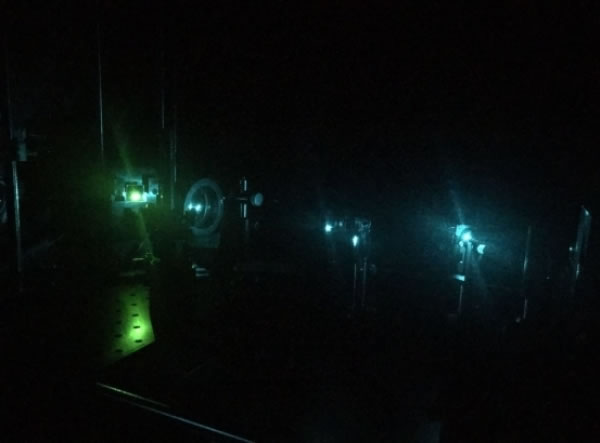Recently, the Qin Chuanjiang research group of the Changchun Institute of Applied Chemistry of the Chinese Academy of Sciences and the Kyushu University Anda Chinboya Laboratory in Japan have cooperated to develop a laser based on a new type of low-cost semiconductor material perovskite. The bottleneck of stable work, realizing a perovskite laser capable of continuous laser output at room temperature.
A laser is a device that converts input light or electrical energy into light. Because of its high uniformity of light emission, it is widely used in industry, medical treatment, information, scientific research and Other fields. Perovskite semiconductor materials have the advantages of low-cost solution processing, adjustable emission wavelength, stable emission spectrum, etc., and they have broad application prospects in lasers as working materials. However, the perovskite laser will disappear after several minutes of continuous excitation at room temperature, and the reason is unknown, which limits further development.
In organic semiconductor devices, after positive and negative charges are combined, excitons can be formed first and then release energy. The behavior and characteristics of excitons have been extensively studied. Excitons are usually divided into singlet excitons and triplet excitons, among which triplet excitons have low direct luminous efficiency. Studies have confirmed that the main factor hindering organic semiconductor continuous laser is its inherent triplet exciton characteristics. But with regard to quasi-two-dimensional perovskite lasers, people have not yet realized the influence of triplet excitons.
Quasi-two-dimensional perovskite is a type of material that sandwiches an inorganic framework of the same repeating unit between organic layers. Recently, researchers have discovered that the lifetime of the triplet excitons in this material can be as long as 1 microsecond, and then guessed that it may be the cause of the disappearance of the laser; although the triplet excitons do not emit light, they can interact with the singlet excitons that emit light. The interaction between the ions causes them to lose energy in a non-luminous form. Therefore, if there are long-lived triplet excitons in the perovskite, they may need to be removed to avoid interference with the laser.
Based on the above considerations, this study introduces an organic layer with a lower triplet energy level in the quasi-two-dimensional perovskite, so that the long-lived excitons generated in the perovskite can be spontaneously transferred to the organic layer, thereby reducing singlet excitation Sub-energy loss, to achieve continuous laser generation under light excitation. The perovskite laser is placed in the air to quench the triplet excitons by oxygen, and continuous laser can also be realized, which further proves that the triplet excitons are one of the reasons for the disappearance of the laser. In addition, after the laser worked continuously for 1 hour in air with a relative humidity of 55%, the laser intensity remained basically unchanged, and the emission spectrum did not move.
The study confirmed the key role of triplet excitons in the working process of perovskite lasers, and the importance of regulating triplet excitons in realizing continuous lasers, which is helpful for the development of low-cost, solution-processable and ultra-miniaturized electronics. Perovskite laser devices are used in optical communications, optical information processing, optical storage, and optoelectronic subsystems composed of large-scale integrated circuit plane technology.
Related results were published in Nature. Researcher Qin Chuanjiang was the first author and first correspondent of the paper, and Changchun Institute of Applied Chemistry was the first completion unit. The research was supported by the Chinese Academy of Sciences and Changchun Institute of Applied Chemistry.

Schematic diagram of the process and work of preparing low-cost perovskite semiconductor lasers by solution spin coating

Continuous excitation of quasi-two-dimensional perovskite laser under working conditions at room temperature (blue is the optical path of the 488nm solid-state laser with optical pump source, and green is the perovskite laser and laser)
We are professional manufacturer of Body Bag. We focused on international export product development, production and sales. We have improved quality control processes of Body Bag to ensure each export qualified product.
If you want to know more about the products in Body Bag, please click the product details to view parameters, models, pictures, prices and other information about Body Bag.
Whatever you are a group or individual, we will do our best to provide you with accurate and comprehensive message about Body Bag!
Body Bag
Body Bag,Black Body Bag,Adult Body Bag,Patient Body Bag
CAREABLE BIOTECHNOLOGY CO,. LTD , https://www.careablemask.com